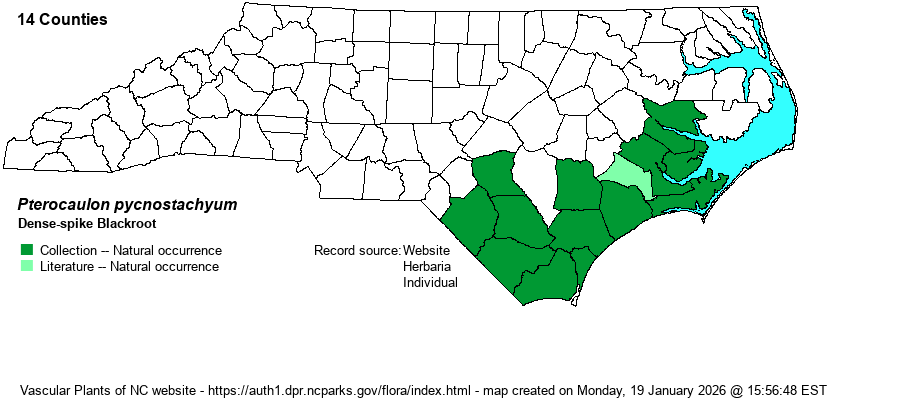| Author | (Michaux) Elliott | |
| Distribution | Southern Coastal Plain, absent from the Sandhills. Ranges north to Beaufort County.
Coastal Plain, NC to southern FL and southern AL. | |
| Abundance | Fairly common on average; can be locally common; uncommon in the northern portions of the range. | |
| Habitat | Dry to mesic Longleaf Pine-Wiregrass savannas and flatwoods, Loblolly Pine woodlands; occasionally in abandoned fields. Typical of somewhat mesic soils -- not overly dry and sandy, but not a wetland species. | |
| Phenology | Flowering and fruiting late April-June. | |
| Identification | Blackroot has a unique form, with the stems winged with tissue decurrent from leaf bases, and the terminal, thick, flowering "cone-like" spike. The upper surfaces of leaves are green, the undersides white with short cottony hairs. The narrow creamy white heads form a dense spike with no ray florets. Plants grow 1-2.5 feet tall. This is a "strange-looking" plant, looking nothing like other composites; it seldom grows in colonies or patches, but rather mostly as scattered individuals. | |
| Taxonomic Comments | None
| |
| Other Common Name(s) | Pineland Wingstem, Fox-tail Blackroot, Coastal Blackroot. Though there are other members of the genus in the Neotropics, it is usually just called "Blackroot" in the field in the Carolinas. | |
| State Rank | S3 | |
| Global Rank | G5 | |
| State Status | | |
| US Status | | |
| USACE-agcp | FACU link |
| USACE-emp | FACU link |

